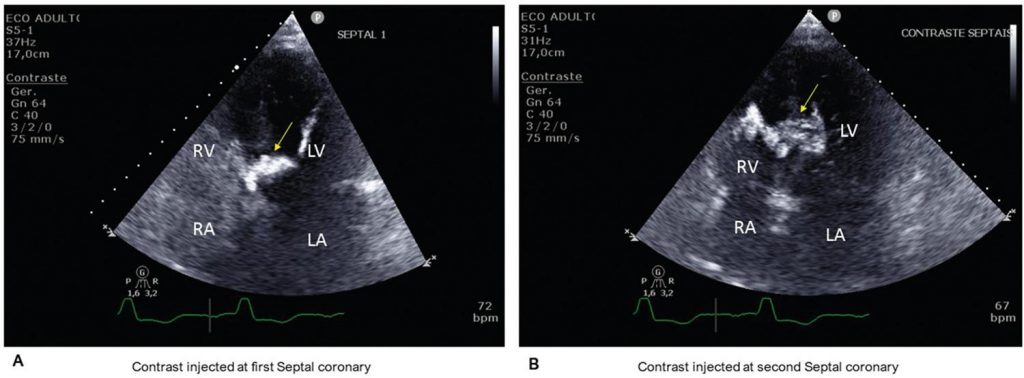Arq. Bras. Cardiol. 2022; 118(5): 873-874
Echocardiography Guiding Percutaneous Treatment of Obstructive Hypertrophic Cardiomyopathy: Navigating (In Known Waters) Is Necessary
This Short Editorial is referred by the Research article "Septal Ablation with Radiofrequency Catheters Guided by Echocardiography for Treatment of Patients with Obstructive Hypertrophic Cardiomyopathy: Initial Experience".
Obstructive hypertrophic cardiomyopathy (HOCM) is the most common cardiac genetic disease and, besides the risk of malignant arrhythmias, it is responsible for symptoms such as palpitations, syncope, or presyncope, exertional dyspnea, and angina pectoris. Ten percent of patients are refractory to clinical treatment with beta-blockers or calcium channel blockers. Treatment alternatives such as surgical myectomy (SM) or non-invasive methods to reduce left ventricle outflow obstruction may be considered in this population. ,
Although surgical myectomy is considered safe and the procedure of choice in experienced centers, it still has a percentage of post-procedure complications such as tamponade, interventricular septal communication, cerebrovascular accident dissection of coronary arteries, and non-fatal cardiac arrest. Controversy still exists about non-surgical hemodynamic treatment options, and the Heart Team’s expertise is an important factor regarding decisions.
[…]
622

